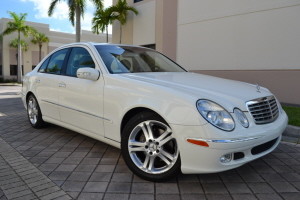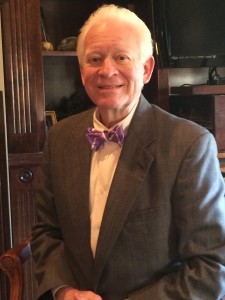A de er killed my car.
er killed my car.
December 1 on a dark cold night on U. S. Highway 431, heading south in Russell County, Ala., just beyond the last lights of the highway until Eufaula, a large doe was in front of me just long enough to see her deliver the jolt that started it all. Much like the 80-mile-per-hour blowout I had on Interstate 16 a few years back, west of Augusta and much like the substantial row of breast-shaped concrete lane barriers I hit trying to shoehorn myself into the left lane way out on Macon Road, when the road turned in a place I didn’t expect, the car didn’t flinch when I hit her.
Did. Not. Flinch. Not a wiggle.
The air bags didn’t deploy, but man, she was screwed up. Three of the four seat belts locked down — damaged irreparably. Nothing structural, just expensive pieces and trim parts. Things like an $800 headlamp. Things like that. But she wasn’t wheezing. The big 5.0 liter V-8 Mercedes engine growled just like I like it. A well-heeled snarl like a concerned Golden Retriever would make. Something wonderful sounding. It is a sound I’ll never tire of hearing. The sound my dream car makes.
I’m at the point in my life with cancer where I often segment things based on the disease. I bought my 2004 Mercedes E500 B.C. (before cancer) in late 2007 from her first owner, with 48,000 miles on the odometer. Brilliant white paint, white leather interior, adjustable air ride and every single option you could get on the car back in 2004. I still get a rush when I think about seeing my car for the first time. Guys, I know you can appreciate this. Jill thinks I’m an idiot. But this car — THIS car — this car, moved me. Still moves me, but not for long.
I live in Alabama and Alabama has a law, Section 32-8-87, in which it states that if your vehicle repair bill exceeds 75% of the actual value of the car, it must declared as salvage and deemed a total loss by your insurance carrier. I get the spirit of the law. You shouldn’t be allowed to get a shade tree body man to fix a car in such a way that it isn’t safe. That it is left mechanically flawed or that something could fall off of it and hurt someone on the road behind you. I get that.
What I don’t get — or don’t want to get, is that my car has been given the death penalty. She took me to Houston, Tex. to M. D. Anderson Cancer Center, to Duke University Hospital and to every one of my tests, procedures and surgeries during our cancer season. She’s hauled my family, my stuff, my dog, my friends and she has serenaded me with bodacious music from the Harmon-Kardon Premium Sound system. A big, thumping sub-woofer and the most crisp highs and mid-range sounds that I like. Because the car is 12 years old, I’ve had to settle for less than top-tier technology interfaces, but the timelessness of one of these cars has allowed time to pass without her showing her age at a glance.
Today, I am waiting for the call from my insurance carrier’s total loss department, during which I’ll be given the details of how they’ll write me a smaller-than-preferable check and I’ll tell them where and when they can come and pick up my car.
Shit.
